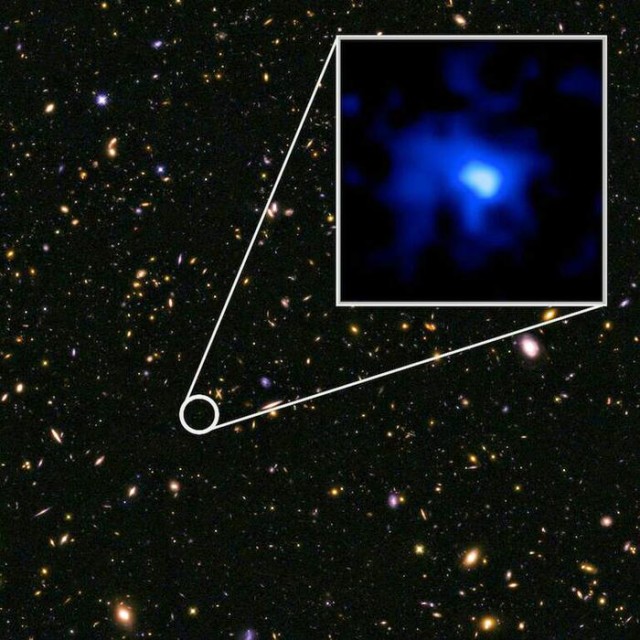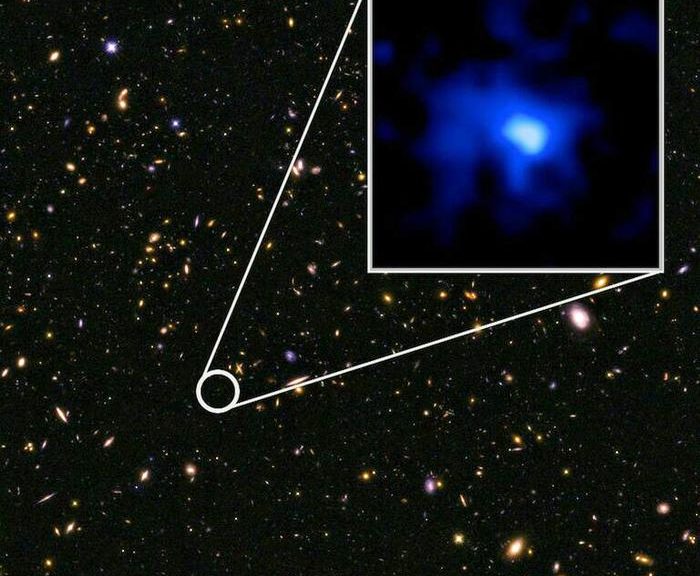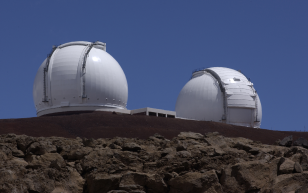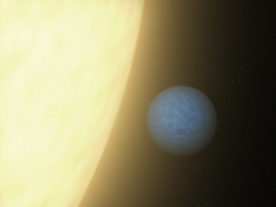
The galaxy EGS-zs8-1 sets a new distance record. It was discovered in images from the Hubble Space Telescope from the CANDELS survey. (NASA, ESA, P. Oesch and I. Momcheva (Yale University), 3D-HST and HUDF09/XDF Teams)
Astronomers have discovered the most distant galaxy ever detected, gaining new insight into the early beginnings of our universe.
Identified as EGS-zs8-1, the international team of astronomers measured its exact distance at 13 billion light years away from Earth. That means that light from the galaxy now reaching Earth was produced back when the universe was only 5% of its present age.
Astronomers say the galaxy was one of the most enormous and brightest objects in the early universe.
The team also found that, 13 billion years ago, this distant galaxy was forming stars some 80 times faster than our galaxy does today.
“It has already built more than 15% of the mass of our own Milky Way today,” said Pascal Oesch, a Yale astronomer in a press release.
The team’s observations of galaxy EGS-zs8-1, as it existed so many years ago, also provided evidence that the universe at its early age, was going through some significant changes.
They found that intergalactic hydrogen was evolving from a neutral or normal state into an ionized state.
“It appears that the young stars in the early galaxies like EGS-zs8-1 were the main drivers for this transition, called reionization,” said Rychard Bouwens of the Leiden Observatory.
The astronomers, led by Yale University and the University of California-Santa Cruz, were able to determine the exact distance of EGS-zs-8-1 by using the powerful Multi-Object Spectrometer for Infra-Red Exploration or MOSFIRE instrument.
This device, which lets astronomers effectively conduct research on several galaxies at the same time, was installed in 2012 on the Keck 1 telescope at the W. M. Keck Observatory in Hawaii.
The distant EGS-zs8-1 galaxy was first identified by its particular colors that appeared in images from NASA’s Hubble and Spitzer space telescopes.
























Comments are closed.